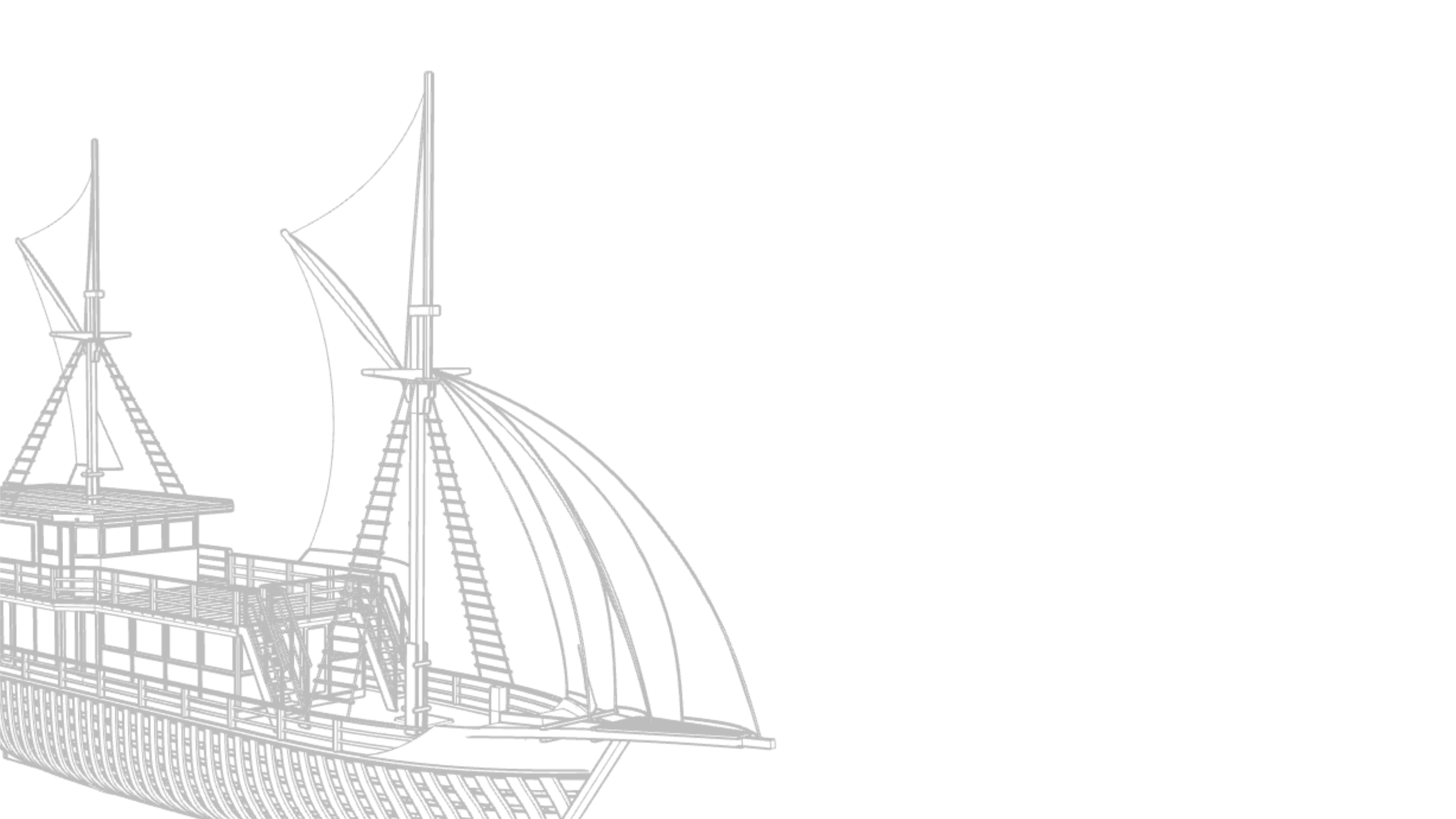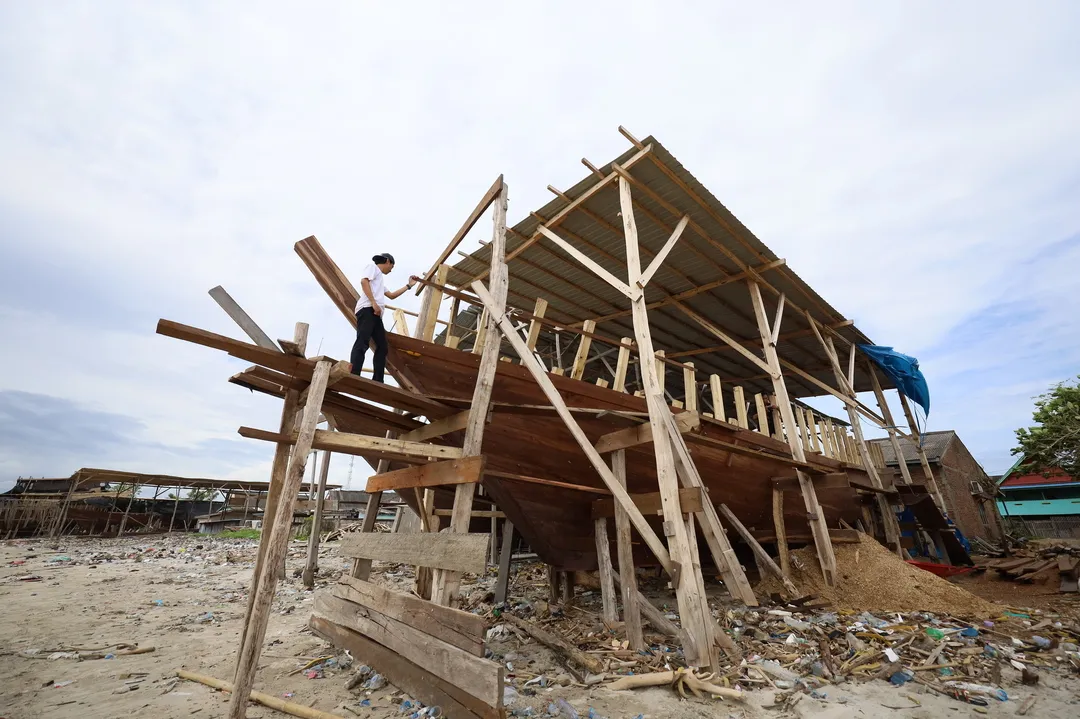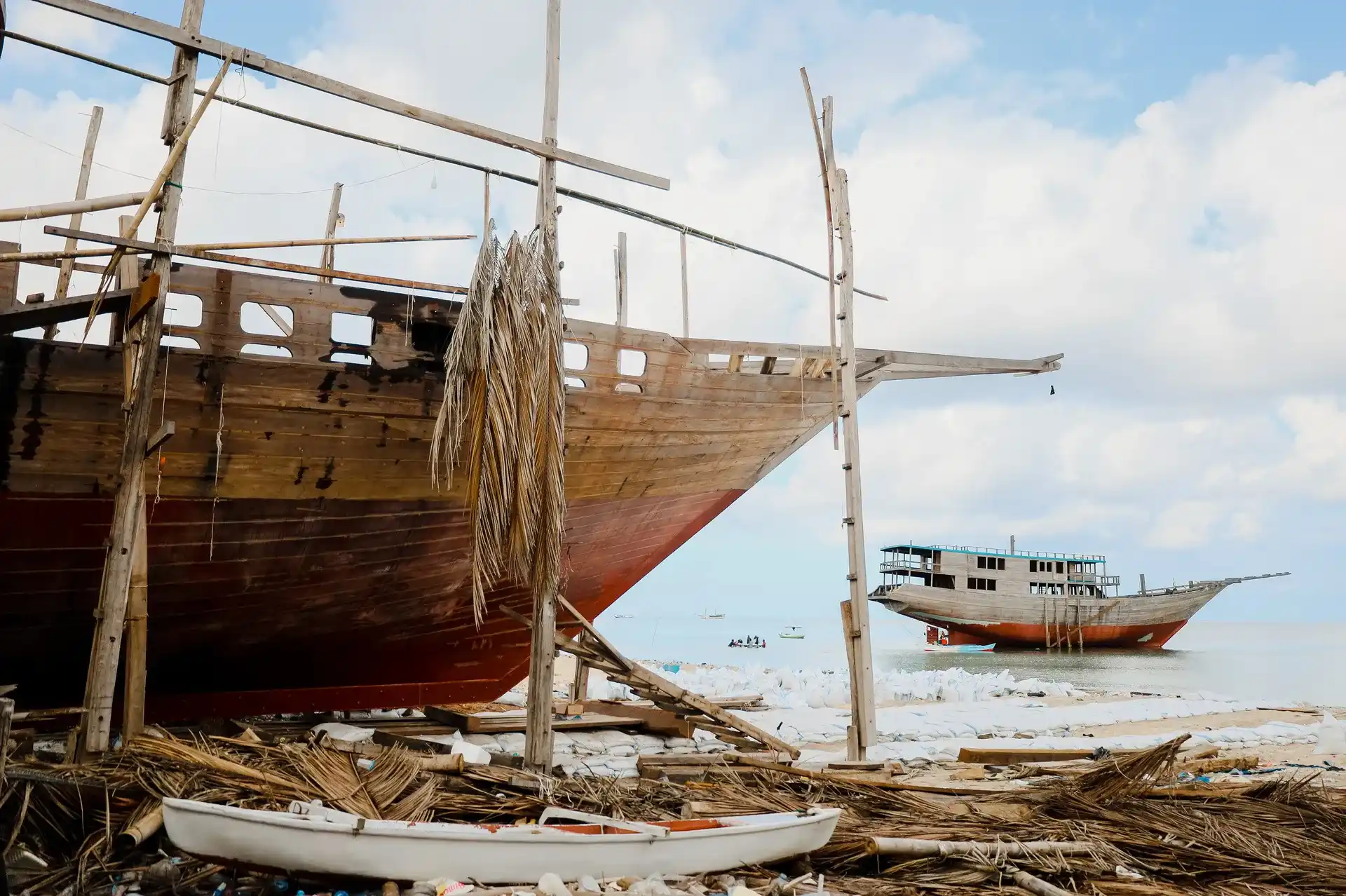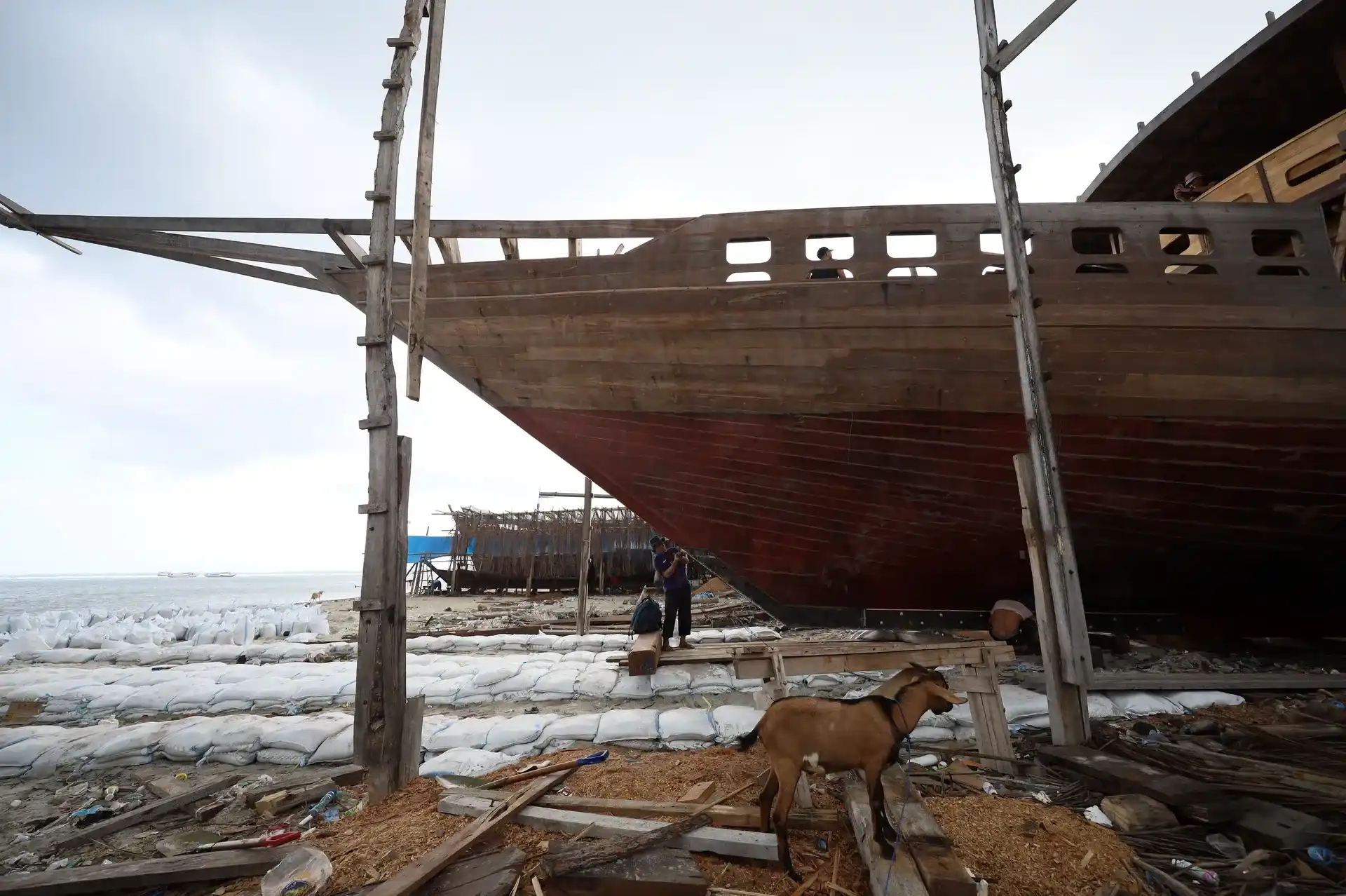Tana Beru Bulukumba: Indonesia’s Iconic Wooden Boats Village
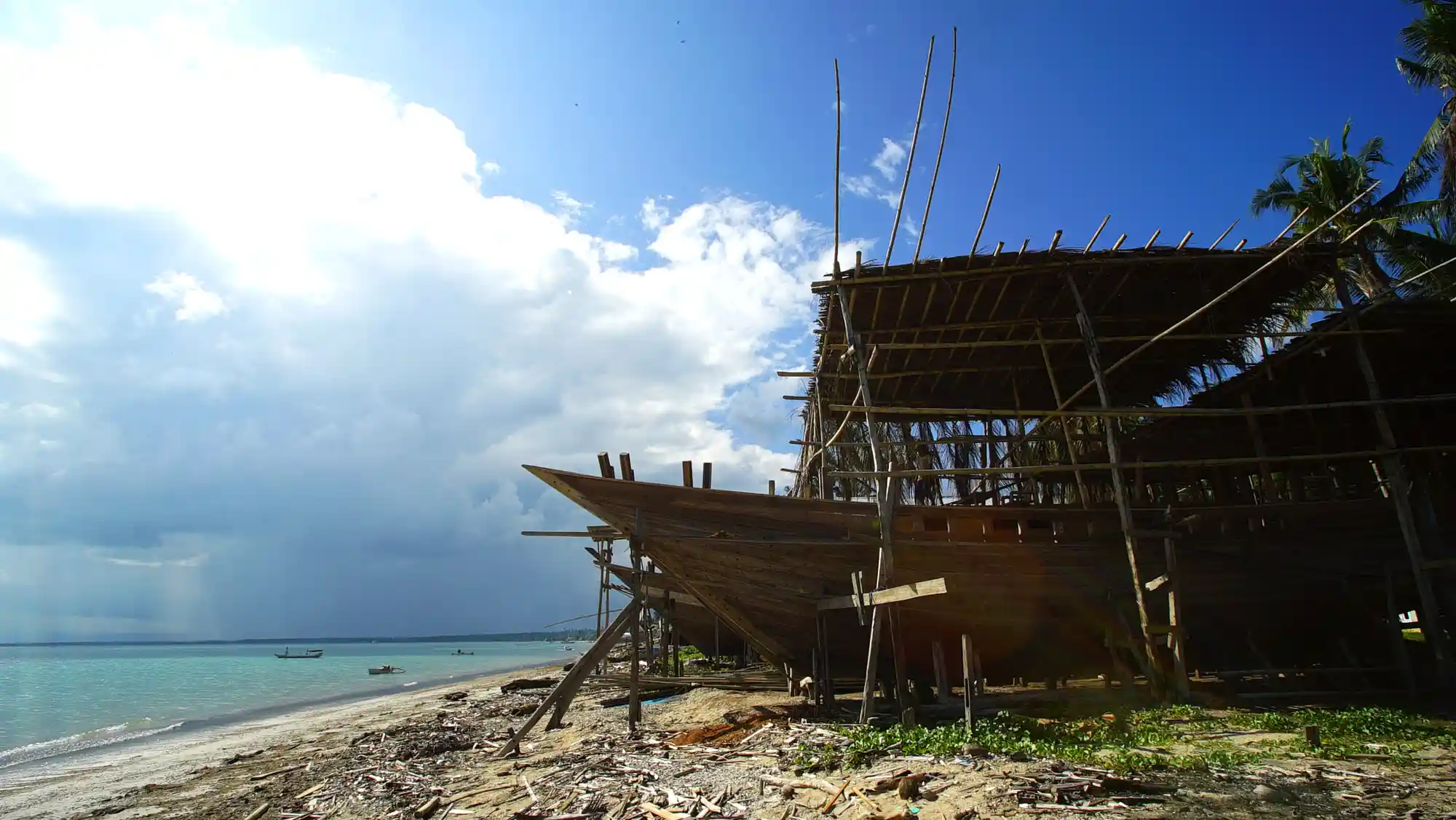
Tana Beru Bulukumba is one of the last surviving shipbuilding villages where ancient maritime culture still thrives. Nestled along the southern coast of South Sulawesi, it is globally renowned as the birthplace of the iconic Phinisi—Indonesia’s handcrafted wooden sailing vessel.
Here, tradition is not preserved in museums, but practiced daily by generations of master builders. Let’s discover what makes this coastal village a living legend of the sea.
Where Is Tana Beru Bulukumba Located?
Tana Beru is located in Bulukumba Regency, South Sulawesi, Indonesia—situated along the southeastern coast of the island, facing the Flores Sea.
This coastal village lies within a region historically known for its maritime strength and vibrant boatbuilding tradition. Its geography plays a key role:
- Tana Beru’s proximity to calm, shallow waters makes it ideal for constructing and launching large wooden vessels like the Phinisi.
- Its location along ancient spice trade routes helped the local Bugis and Makassar seafarers thrive as sailors, traders, and shipwrights.
- The surrounding forests historically provided access to key boatbuilding materials, such as teak, ironwood, and bitti timber.
Read Also: The History of Phinisi Boats from Bulukumba: Indonesia’s Timeless Sail
What Is Tana Beru Known For?
Tana Beru is renowned as the cultural heart of traditional shipbuilding in Indonesia—especially for crafting the iconic Phinisi boats. Its reputation is deeply tied to centuries of maritime expertise rooted in local tradition. Here’s what defines it:
- Phinisi craftsmanship: Tana Beru is one of the last surviving villages where these majestic wooden ships are still built by hand—without blueprints, only inherited skill.
- Bugis and Makassar heritage: Influenced by these legendary seafaring communities, Phinisi design reflects both functionality and spiritual meaning.
- UNESCO recognition: The tradition of Phinisi boatbuilding was designated as an Intangible Cultural Heritage of Humanity in 2017.
- Ritual-rich construction: Every boat involves ceremonies—from keel-laying to launch—underscoring a worldview where boats are sacred.
- Global admiration: Today, Tana Beru draws interest from heritage travelers, boat enthusiasts, and cultural preservationists alike.
In short, Tana Beru isn’t just known for boats—it’s known for keeping Indonesia’s maritime soul alive.
How Traditional Boats Are Built in Tana Beru?
In Tana Beru, boatbuilding isn’t just a craft—it’s a sacred, time-honored practice passed down through generations. The process blends technical skill, cultural ritual, and deep-rooted maritime intuition. Here’s how these traditional boats, especially the Phinisi, come to life:
1. Oral Transmission, No Blueprint
Builders don’t rely on written plans or modern schematics. Instead, master boatbuilders—called punggawa—carry detailed knowledge in memory.
They measure by eye, calculate by experience, and make decisions intuitively, guided by centuries of oral tradition and familial apprenticeship.
2. Manual Tools: Adzes, Chisels, Saws
Construction is done entirely by hand using age-old tools.
Adzes are used to carve and shape large timbers, chisels refine joints and curves, and long saws cut heavy wooden planks.
These tools not only preserve tradition but allow greater sensitivity and control over the wood’s natural grain.
3. Materials: Teak, Ironwood, Bitti
The wood is locally sourced and chosen for its strength and durability:
- Teak is valued for its resistance to rot and weather.
- Ironwood (locally called kayu besi) is dense and long-lasting, perfect for hulls.
- Bitti (native to Sulawesi) is prized for flexibility and used in frames or decking.
4. Rituals: Keel-laying, Sea Offerings, Launch Ceremonies
The spiritual side of boatbuilding is just as essential as the physical. Each boat begins with a keel-laying ceremony, involving offerings like rice, incense, and sometimes animal sacrifice, to ask for safe construction and voyages.
Read Also: Inside the Maritime Heritage of Bulukumba: Where Phinisi Ships Are Born
Who Builds the Boats in Tana Beru?
Boatbuilding in Tana Beru is a collective cultural endeavor led by skilled artisans and supported by the local community. It’s not just about building a vessel—it’s about preserving legacy, identity, and pride. Here are the key people and roles that make this timeless craft possible:.
1. Punggawa (Master Boatbuilder)
The punggawa is the respected leader of the shipyard—responsible for guiding the entire construction process without blueprints.
Their expertise lies in memory, intuition, and years of experience passed down through generations.
2. Community-Based Labor
A single Phinisi or traditional boat can involve 30 to 50 workers, each with specialized roles:
- Joiners fit and shape wooden components.
- Riggers handle masts, sails, and ropework.
- Carvers add symbolic ornamentation to the hull and stern.
3. Generational Knowledge
Most of the crew are related—fathers, sons, uncles—working side by side. Boatbuilding is often a family tradition, where skills are taught informally at the dock rather than in school.
Why Are Boats Sacred in Tana Beru?
Boats in Tana Beru are not seen as mere objects—they are living symbols deeply rooted in local spiritual beliefs. The sacredness of the boat lies in its connection to the ancestors, the sea, and the spirit world.
Here’s why boats are considered sacred in Tana Beru:
1. Belief That The Boat Has A Soul
Boats are treated as living beings, with a spirit that must be honored and protected throughout the building process.
2. Ceremonies To Honor Spirits and The Sea
Rituals like the keel-laying blessing and launching offerings are performed to seek harmony with the sea and ancestral guardians.
3. Taboos and Traditional Cosmology Influence The Process
Builders avoid working on certain days, follow spiritual advice, and align construction with cosmological beliefs—ensuring that the vessel carries good fortune and safety at sea.
Read Also: How Long to Build a Phinisi? Inside Indonesia’s Timeless Craft
Experience Tana Beru Firsthand at Riara Marine
For those eager to go beyond reading and truly feel the spirit of Tana Beru, Riara Marine offers an unforgettable cultural encounter. This is where Indonesia’s maritime heritage comes alive—not in a museum, but in motion.
- Witness real-time construction: See Phinisi boats being built by hand, using age-old techniques passed down through generations.
- Join hands-on workshops and cultural immersions: Try shaping wood, learn traditional lashing methods, or join in local rituals that guide the boatbuilding process.
- Learn directly from master craftsmen: Meet the punggawa and builders who carry centuries of wisdom—and are eager to share it with respectful travelers.
Ready to step into the story? Book your Boat Construction tour at Riara Marine and become part of Tana Beru’s living tradition.
